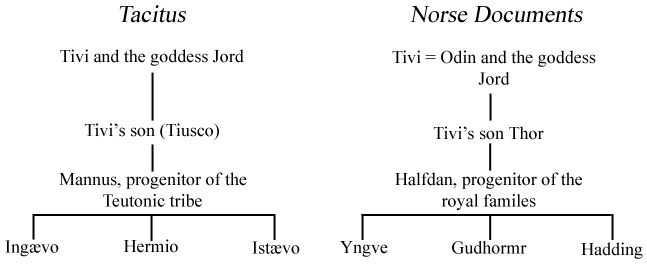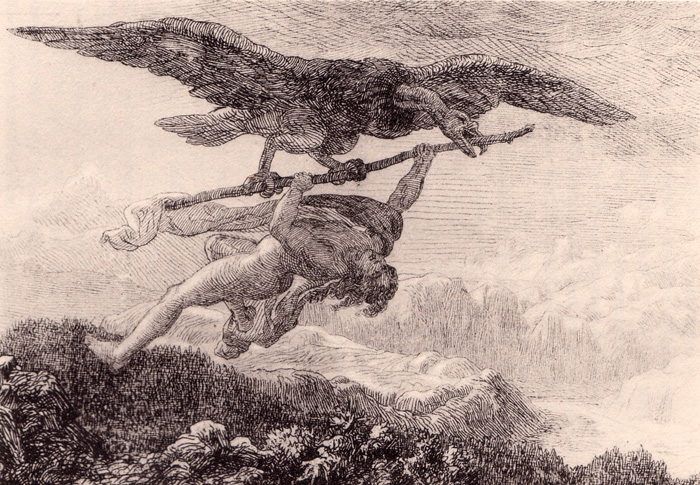|
148
many of the most important events of the myth take place. Before I present these,
the chain of evidence requires that I establish clearly the names applied to Borgar in our literary sources. Danish
scholars have already discovered what I pointed out above, that the kings Gram Skjoldson, Halfdan Berggram, and
Halfdan Borgarson mentioned by Saxo, and referred to different generations, are identical with each other and with
Halfdan the Skjoldung and Halfdan the Old of the Icelandic documents.
The correctness of this view will appear from the following parallels:*
* The first nine books of Saxo form a labyrinth constructed out of myths related
as history, but the thread of Ariadne seems to be wanting. On this account it might be supposed that Saxo had treated
the rich mythical materials at his command in an arbitrary and unmethodical manner; and we must bear in mind that
these mythic materials were far more abundant in his time than they were in the following centuries, when they
were to be recorded by the Icelandic authors. This supposition is however, wrong. Saxo has examined his sources
methodically and with scrutiny, and has handled them with all due reverence, when he assumed the desperate task
of constructing, by the aid of the mythic traditions and heroic poems at hand, a chronicle spanning several centuries
— a chronicle in which fifty to sixty successive rulers were to be brought upon the stage and off again, while
myths and heroic traditions embrace but few generations, and most mythic persons continue to exist through all
ages. In the very nature of the case, Saxo was obliged, in order to solve this problem, to put his material on
the rack; but a thorough study of the above-mentioned books of his history shows that he treated the delinquent
with consistency. The simplest of the rules he followed was to avail himself of the polyonomy with which the myths
and heroic poems are overloaded, and to do so in the following manner:
Assume that a person in the mythic or heroic poems had three or four names or epithets
(he may have had a score). We will call this person A, and the different forms of his name A', A'', A'''. Saxo’s
task of producing a chain of events running through many centuries forced him to consider the three names A', A'',
and A''' as originally three persons, who had performed certain similar exploits, and therefore had, in course
of time, been confounded with each other, and blended by the authors of myths and stories into one person A. As
best he can, Saxo tries to resolve this mythical product, composed, in his opinion, of historical elements, and
to distribute the exploits attributed to A between A', A'', and A'''. It may also be that one or more of the stories
applied to A were found more or less varied in different sources. In such cases he would report the same stories
with slight variations about A', A'', and A'''. The similarities remaining form one important group of indications
which he has furnished to guide us, but which can assure us that our investigation is in the right course only
when corroborated by indications belonging to other groups, or corroborated by statements preserved in other sources.
But in the events which Saxo in this manner relates about A', A'', and A''', other
persons are also mentioned. We will assume that in the myths
|


